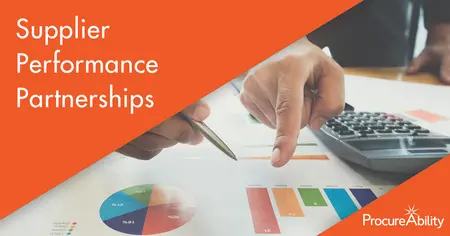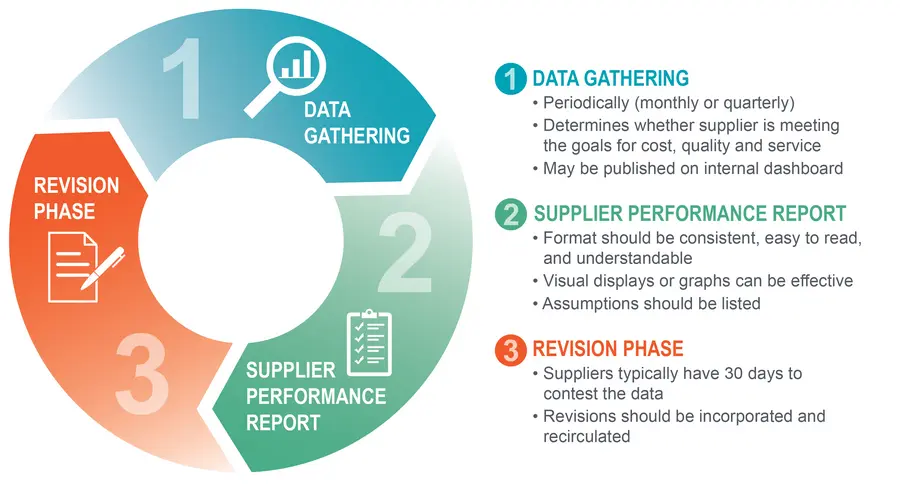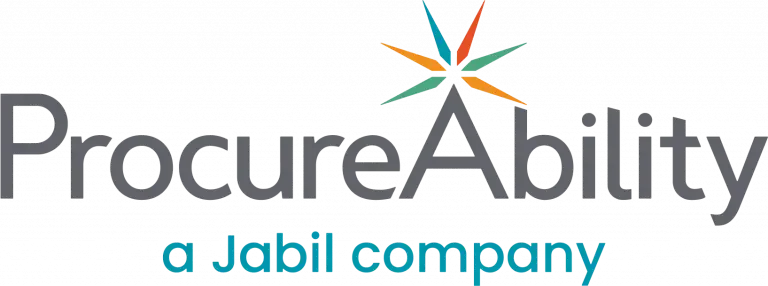
Procurement Professionals know that their work does not stop once a supplier contract is signed. Supplier relationships grow and evolve over time, creating benefits – and responsibilities – for both sides.
Supplier relationships do not grow on their own – they need some input and participation from your organization in order to reach their full potential. That is where strong Supplier Performance Management practices come into play. This blog will cover the Supplier Performance Reporting Process and the 3 types of supplier relationships that your procurement organization may have.

Supplier Performance Reporting Process
Supplier performance reporting is a two-way communication cycle that highlights notable developments and opportunities or deficiencies within the supplier partnership related to cost, quality, or service. The cycle relies on timely communication, quantifiable key performance indicators (KPIs), win-win incentives and can be broken into 3 phases:
- Data Gathering Phase
During this phase, the organization gathers data and assesses the suppliers’ performance. The data gathered should be as objective as possible and should track with the KPI’s and goals set out in the contract.
- Supplier Performance Report
Once the data is gathered, it will be consolidated into a report that tells the story behind the numbers. This report can be simple and targeted, such as a one-page summary of key items, or a robust dashboard with customizable filters and data visualizations. The important thing is for this report to be compiled on a set cadence, and for it to be consistently formatted for easy comparison.
- Revision and Correction Phase
The supplier should have access to the supplier performance report from Phase 2. This provides them an opportunity to know where their strengths and deficiencies are. This also allows them an opportunity to correct anything that needs to be corrected within the report. Perhaps the data source you were using to compile the report was missing information from one key region or business unit and this phase allows for those mistakes to be caught and corrected.
Above all, it’s crucial for this process to be simple, repeatable, and easy to understand.

An Example of the Supplier Performance Reporting Process
Let’s say that procurement manages the relationship with a key LTL Freight Supplier. This LTL supplier will handle the majority of ground transportation for at least the next two years.
Timely and reliable delivery is key. The main metric, or KPI, that the organization uses is On-Time Performance (OTP), or the percentage of packages that arrive on time to their destination. The contract stipulates that the freight supplier must meet an average quarterly 95% On-Time Performance.
- Data Gathering Phase: The procurement organization will pull data from their Transportation Management Service (TMS) on a weekly cadence. Thankfully, this process has been automated with a SQL Script and so it’s a one click process to pull this performance data. Occasionally, the organization will stress test and double check the data to make sure there aren’t omissions or other errors.
- Supplier Performance Report: The organization uses the data to build the performance report. The performance data for the week is added to a simple BI dashboard with a couple of graphs that show the performance for the supplier by week and by region. Whenever the metric falls below the agreed to 95%, the graph flashes red.
- Revision and Correction Phase: The supplier has real time access to the BI Dashboard from Phase 2. They have 30 days after data upload to ask questions about specific weeks. Having access to this data has really motivated the supplier to stay above the 95% goal and has led to a noticeable improvement in their performance.
Types of Supplier Relationships
Not every supplier relationship will require the same level of partnership as the example above. Some will require a more hands-off approach. Some may even require a more hands-on approach. It all depends on the criticality of the supplier and the opportunity for win-win improvements. A procurement organization will generally manage three types of supplier relationships:
- Tactical Relationships (Mail Carrier Relationships): A mail carrier delivers your mail every morning without you having to check up on him or her. And while you could certainly suggest ways to optimize the mail route, chances are the mail carrier has things under control.
In that same way, transactional suppliers largely prefer a hands-off approach. There might be an annual review or metric reports but there usually aren’t any two-way feedback sessions or senior management involved. These suppliers usually handle less critical categories and aren’t necessarily business critical.
- Collaborative Supplier Relationships (Neighbor Relationships): You and your neighbor might coordinate on barbeques or community gardens. It’s not the closest type of relationship but there is some two-way feedback happening.
In that same way, collaborative suppliers should have active performance management and two-way communication, even if it is on a less frequent cadence or depth. There might be annual continuous improvement goals, limited senior management participation, and active quarterly performance reports. Both the organization and the supplier have a platform to recommend development opportunities or operational efficiencies.
- Strategic Suppliers (Roommate Relationships): A roommate lives in the same household and is a daily partner for planning lunch, doing chores, and managing the home. Communication is extremely frequent and there is plenty of room for collaboration and cooperation.
Just like roommates, Strategic suppliers are the closest type of supplier relationship, reserved for large critical categories or categories in which development opportunities abound. The LTL Freight Example above was an example of a strategic relationship. If an organization cannot ship products, then a huge disruption occurs. Strategic Partnerships will have frequent supplier performance reports and formal two-way feedback sessions. They will likely involve senior management participation and meetings will focus on supplier development opportunities and continuous improvement. Both the organization and the supplier will frequently recommend operational or contract changes that result in mutual benefits related to cost, quality, or service.
As procurement professionals, we are tasked with managing the Supplier Relationship throughout its lifecycle. Participating in proactive Supplier Relationship Management will improve the cost, quality, and service of that relationship and make suppliers feel like they are being valued and appreciated. The benefits to such an approach are immeasurable.
Subscribe to ProcureAbility Insights to access whitepapers, presentations, plus our latest thought leadership.


